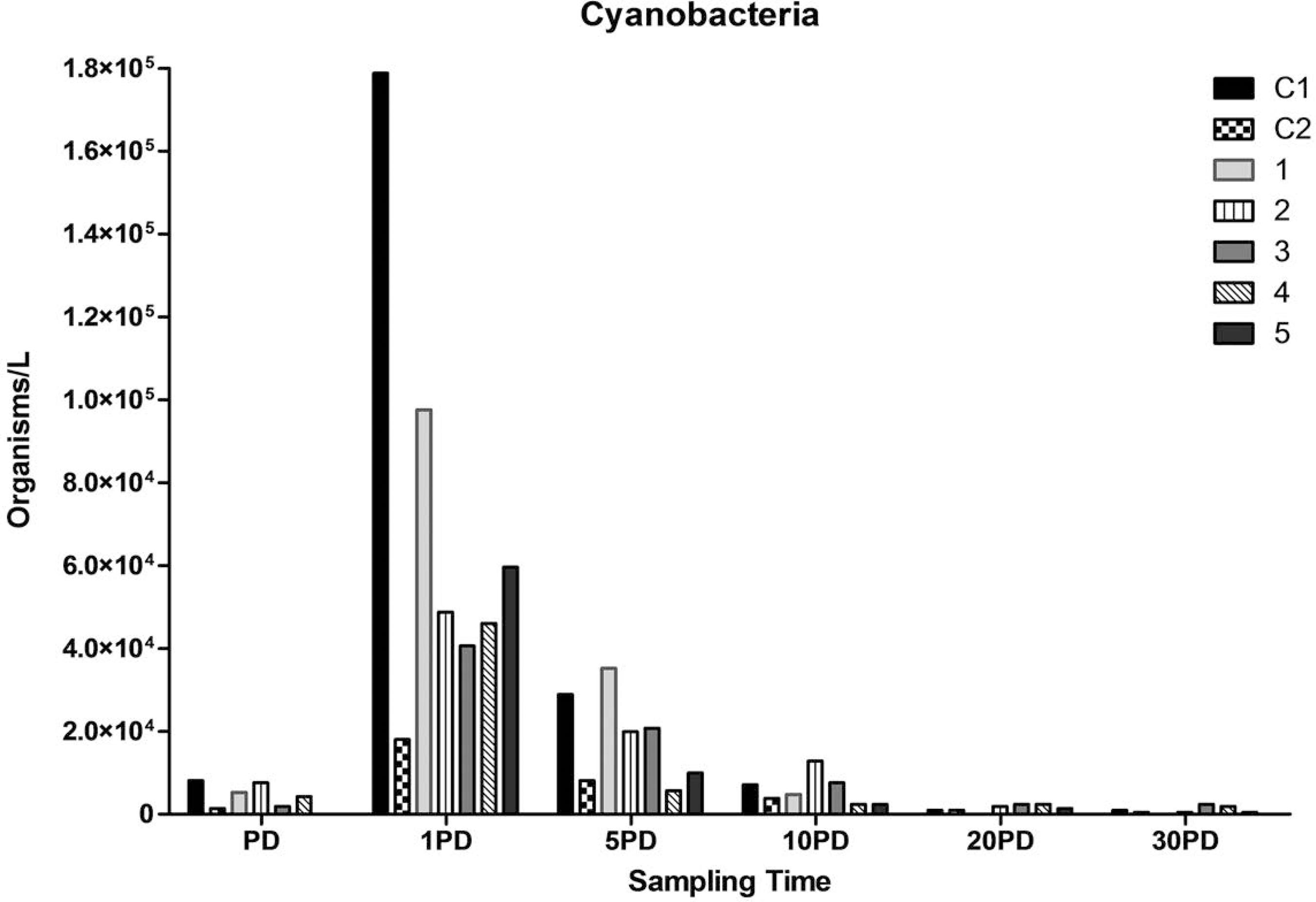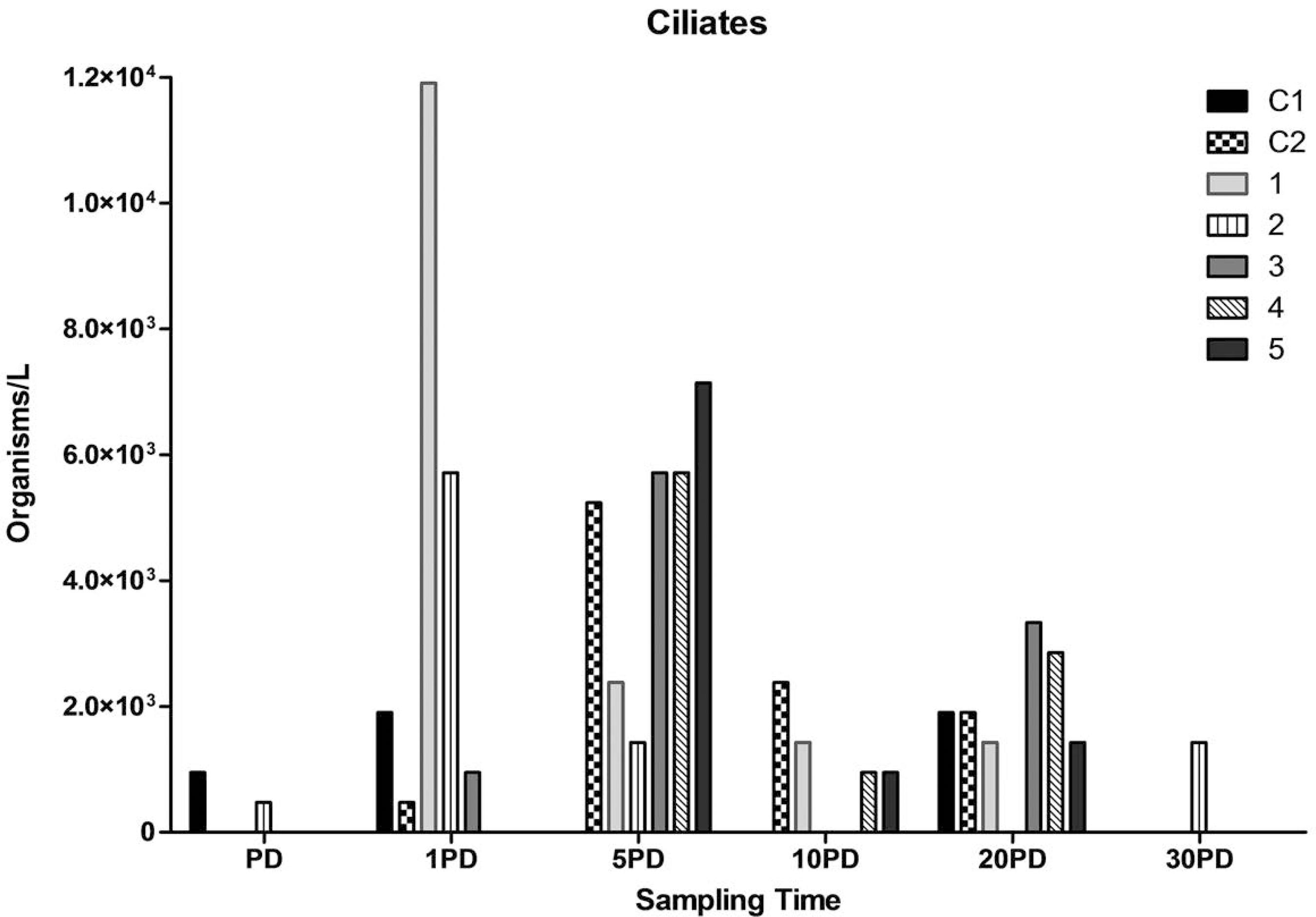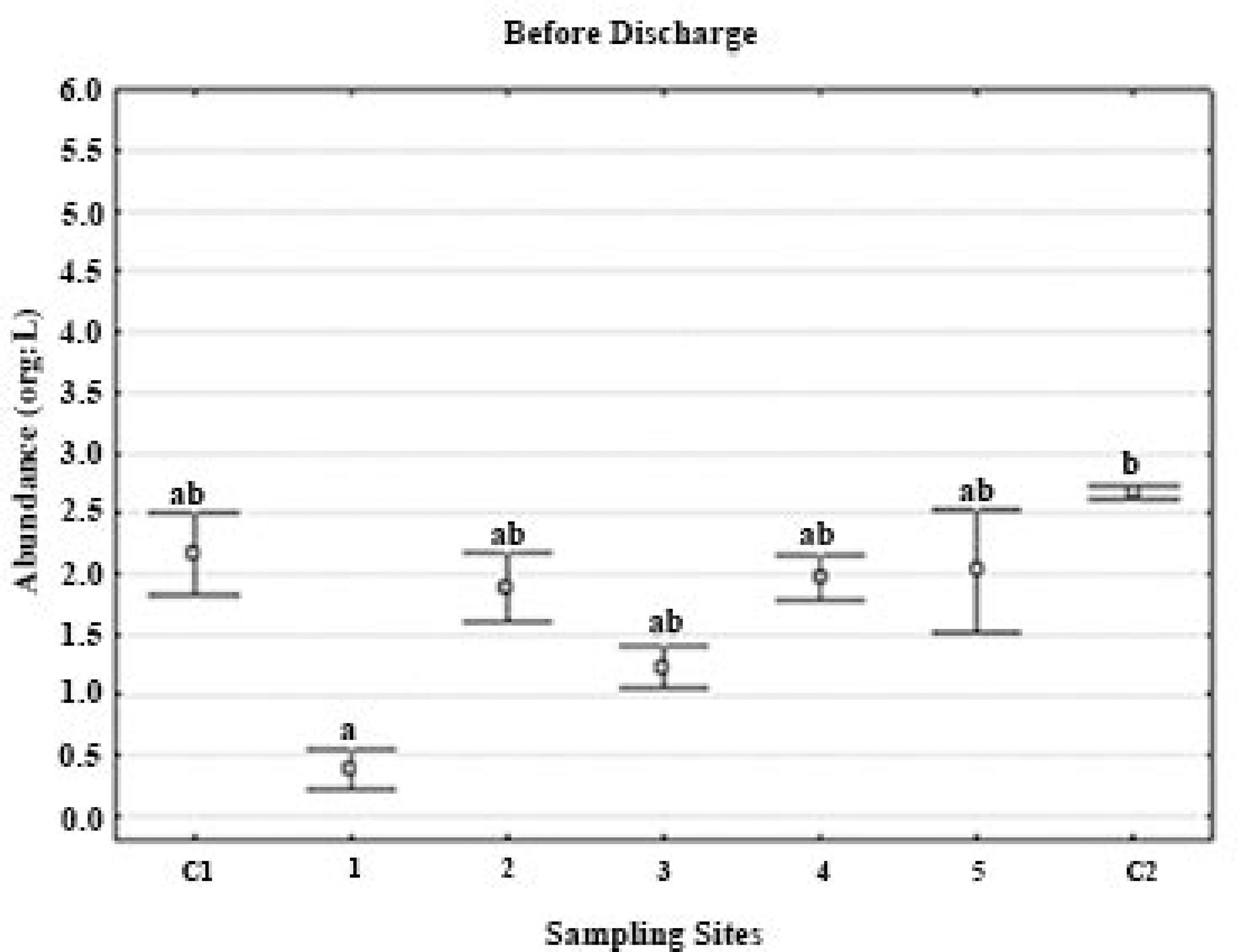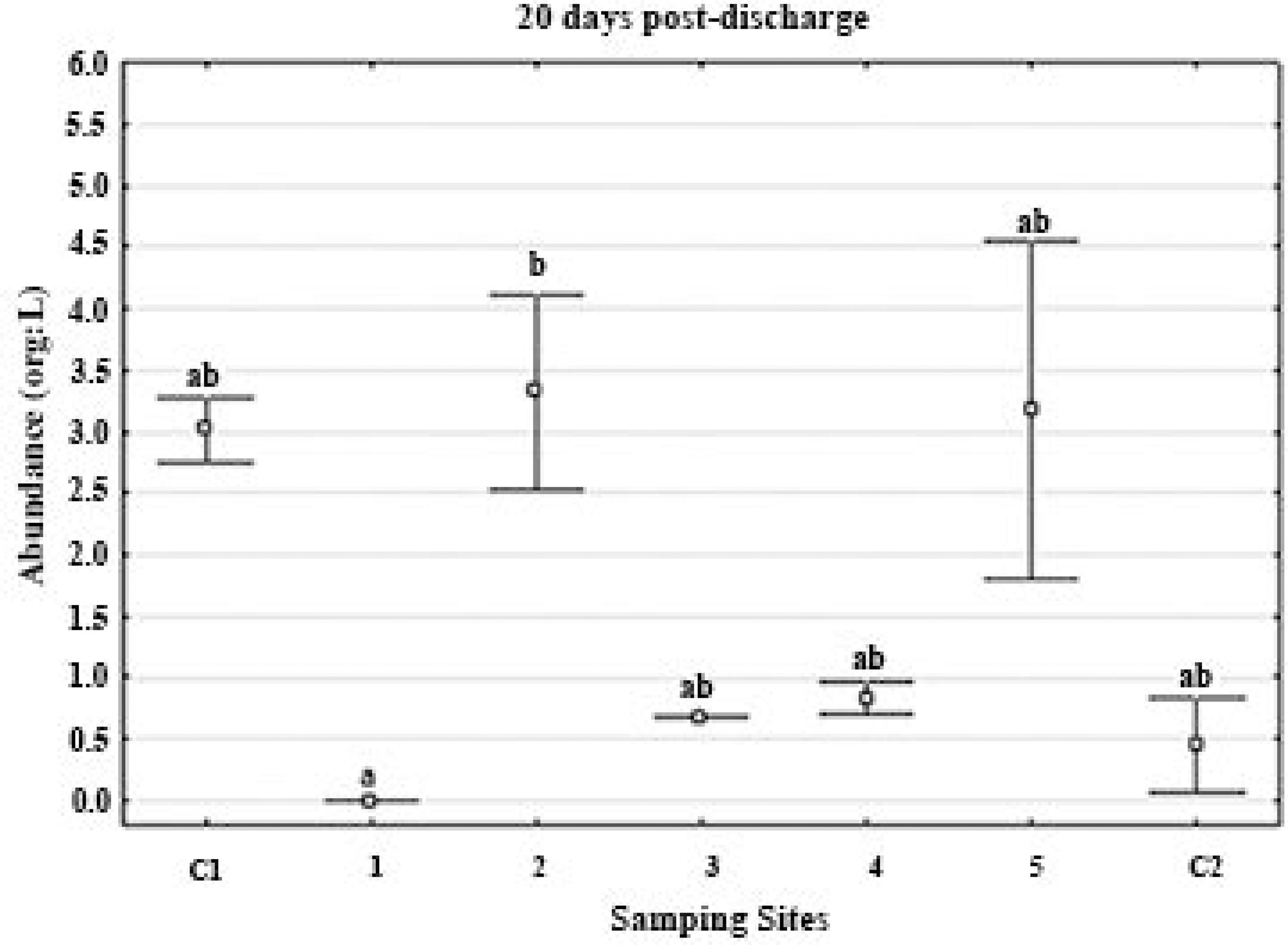Abstract
Water quality, chlorophyll a, phytoplankton, proto and mezo-zooplankton abundance were spatiotemporally evaluated in an estuary receiving effluents from a Pacific white shrimp Litopenaeus vannamei farm in Patos Lagoon estuary, Southern Brazil. Samples were taken before (BD) and; 1 day (1 PD) 5 days (5 PD), 10 days (10 PD), 20 days (20 PD) and 30 days (30 PD) after the effluents discharge. Some water quality parameters were affected by the effluents discharge; however, these changes were restricted to a distance of 20 m from the effluent discharge channel for a period of 5 days. The microbial community was dominated by chlorophyceae, followed by diatoms, cyanobacteria and ciliates. There was an increase in the abundance of different groups on the 1 PD sampling compared to BD. The zooplankton abundance was low in practically all sites, except for 30 PD sampling. The meso-zooplanktonic organisms were represented by copepods, mostly Acartia tonsa. Despite some effects on water quality and phytoplankton and protozooplankton abundance until 5 PD sampling, these alterations dissipated in a short period of time. We conclude that the environment quickly assimilated the effluents discharge, and the water quality parameters remained within the limits stipulated by standard guidelines.
Descriptors:
Aquaculture; Environmental impact; Plankton; Effluent













